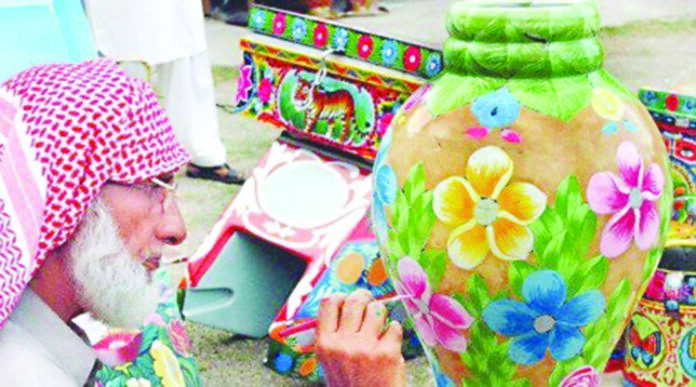Pakistan, with its roots deeply embedded in the ancient civilizations of the Indus Valley, stands as a vibrant mosaic, intricately woven from the diverse strands of history, ethnicity, and faith. Over centuries, its fertile plains and rugged mountains have been witness to migrations, invasions, and cultural exchanges, resulting in a unique convergence of influences that define its rich tapestry today. Understanding the dynamic phenomenon of cultural fusion in Pakistan is essential for comprehending its myriad manifestations across various aspects of life and its profound impact on national identity.
Pakistan’s linguistic landscape vividly portrays its rich historical narrative. Urdu, serving as the lingua franca, resonates with echoes of Persian, Punjabi, and Arabic, seamlessly blending with regional languages like Sindhi, Pashto, Balochi, Seraiki, and Kashmiri. This linguistic amalgamation permeates everyday conversations, music, and literature, orchestrating a harmonious symphony of sounds and expressions. Regional proverbs seamlessly integrate into the national discourse, while Urdu poetry gracefully incorporates Punjabi folk metaphors, highlighting the interconnectedness of these linguistic threads.
The tantalizing aroma of spices drifting through bustling bazaars narrates a story of culinary fusion. Mughal influences linger in sumptuous biryanis and creamy kormas, while Sindhi spices impart a fiery touch to chaat. Balochistan’s rugged terrain offers hearty, meat-based dishes like Sajji, reflecting Pashtun hospitality through kabuli pulao and aromatic lamb stews. The coastal flavours of Sindh infuse biryani with seafood delights, while Punjabi butter chicken finds its way onto tables across the nation. This delightful fusion not only satiates the palate but also fosters connections among communities through shared culinary experiences and traditions.
From the majestic Shalimar Gardens of Lahore inspired by the Mughals to the intricately carved wooden mosques of Hunza, Pakistan’s architectural heritage celebrates diversity. The towering minarets of Sindh blend seamlessly with Mughal arches, while Balochistan’s mud houses are adorned with intricate Sindhi geometric patterns. Sufi shrines serve as a testament to the fusion of Persian and Indo-Islamic artistry, while vibrant truck art blends regional motifs with modern influences. Pakistani artists draw inspiration from this confluence, creating masterpieces that reflect the multifaceted beauty of their homeland.
The rhythmic beats of dhol drums intertwine with the soulful melodies of qawwali at Sufi shrines, while Punjabi bhangra merges with Sindhi dholak rhythms at joyous celebrations. Classical Pakistani music showcases diverse instruments like the sitar, tabla, and sarangi, each embodying the unique musical traditions of different regions. The graceful movements of Sindhi dance seamlessly blend with the energetic spirit of Punjabi bhangra, creating a mesmerizing spectacle that transcends regional boundaries.
Cultural fusion remains a defining characteristic of Pakistani society. It fosters understanding, enriches our collective experience, and fuels innovation. As Pakistan emerges on the global stage, its unique cultural fabric becomes a source of strength and identity, reminding us that unity can be found in diversity, and beauty emerges from the harmonious blending of different threads. While challenges exist, embracing cultural fusion remains integral to Pakistan’s identity and resilience. By celebrating its rich heritage and navigating challenges with sensitivity, Pakistan continues to weave a vibrant future, one thread at a time.
No doubt, Pakistan’s cultural fusion results in a rich tapestry of traditions, languages, cuisines, and arts. This diversity enhances the country’s cultural landscape and provides a platform for mutual understanding and appreciation among different communities. The fusion of various cultures fosters tolerance and harmony among different ethnic and religious groups. It promotes acceptance of differences and encourages coexistence, contributing to social cohesion and stability.
Pakistan’s cultural fusion facilitates exchanges between diverse communities, both within the country and with other nations. This exchange of ideas, traditions, and values promotes cross-cultural understanding and strengthens diplomatic ties. Cultural fusion can create economic opportunities through tourism, cultural industries, and international collaborations. Pakistan’s diverse cultural heritage has the potential to attract tourists and investors interested in experiencing and supporting its unique cultural offerings. Embracing cultural fusion fosters resilience and adaptability in society. It enables communities to navigate social changes, economic shifts, and geopolitical challenges by drawing on the strengths of various cultural traditions and practices.
While cultural fusion in Pakistan offers numerous benefits, it also presents several challenges. One challenge is the preservation of cultural identities amidst fusion. Rapid globalization and urbanization can lead to the erosion of traditional practices and languages, causing concerns about cultural homogenization and the loss of heritage. Balancing cultural diversity with social cohesion can be challenging. Ethnic, linguistic, and religious differences may sometimes lead to social tensions, particularly in areas where cultural fusion is perceived as a threat to traditional values or identities.
Differences in cultural norms, values, and beliefs can lead to misunderstandings and conflicts, especially in multicultural settings. Cultural fusion requires efforts to promote intercultural dialogue, empathy, and respect to mitigate such conflicts. While globalization facilitates cultural exchange, it also introduces dominant cultural norms and practices that may overshadow or diminish local traditions. This can challenge the authenticity and integrity of cultural expressions.
Despite these challenges, cultural fusion remains a defining characteristic of Pakistani society. It fosters understanding, enriches our collective experience, and fuels innovation. As Pakistan emerges on the global stage, its unique cultural fabric becomes a source of strength and identity, reminding us that unity can be found in diversity, and beauty emerges from the harmonious blending of different threads. While challenges exist, embracing cultural fusion remains integral to Pakistan’s identity and resilience. By celebrating its rich heritage and navigating challenges with sensitivity, Pakistan continues to weave a vibrant future, one thread at a time.






















